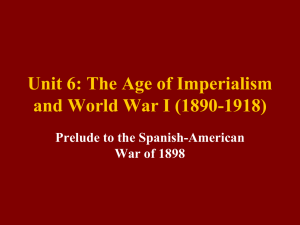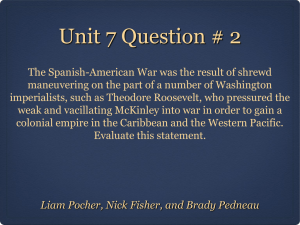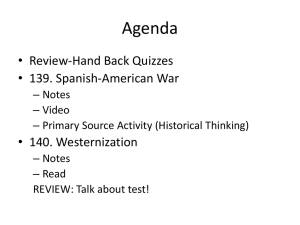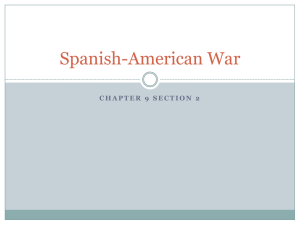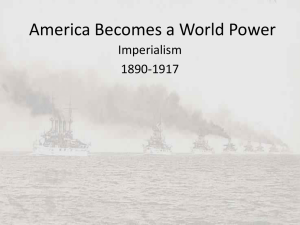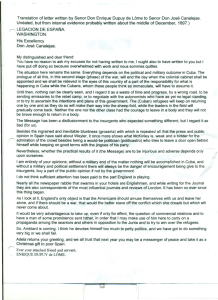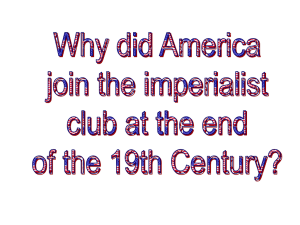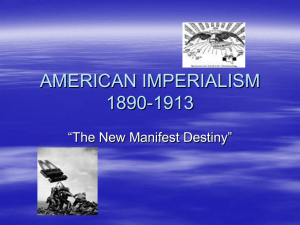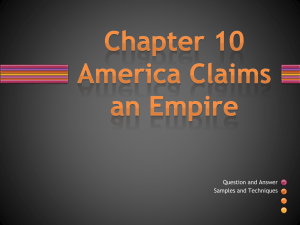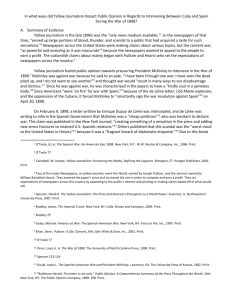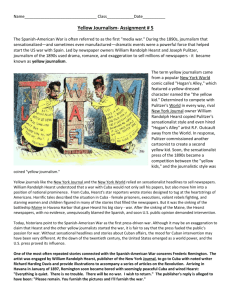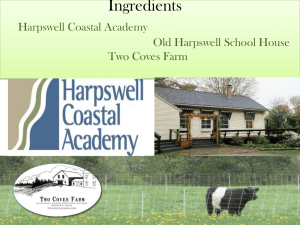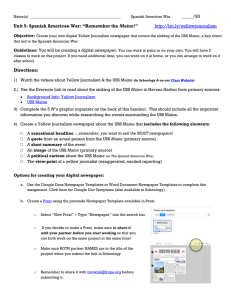File
advertisement
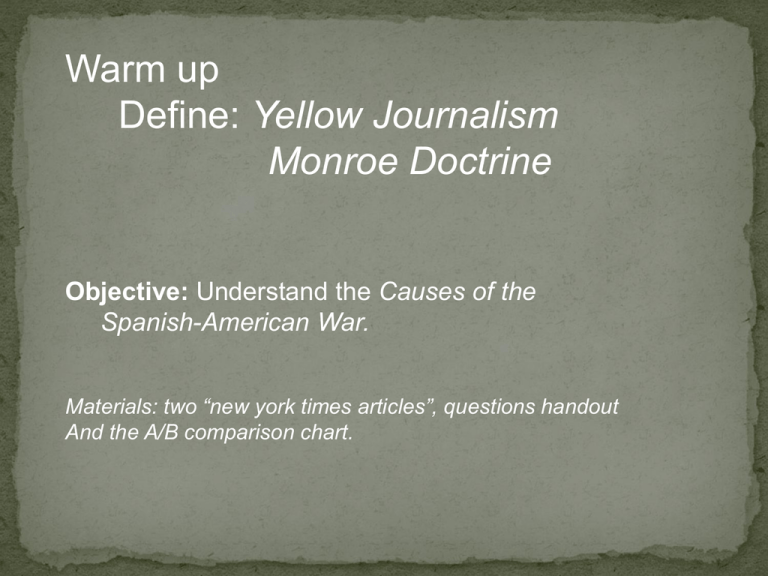
Warm up Define: Yellow Journalism Monroe Doctrine Objective: Understand the Causes of the Spanish-American War. Materials: two “new york times articles”, questions handout And the A/B comparison chart. Yellow Journalism Techniques include exaggerations of news events, scandalmongering, or sensationalism. The most successful publishers of this brand of journalism at the turn of the 20th Century were William Randolph Hearst and Joseph Pulitzer. Yellow Journalism – type of journalism that presents little or no legitimate, well-researched news but instead uses eye-catching headlines and scandalous stories to sell more newspapers. 2 min video clip…. Yellow journalism agitated much of the American public and ratcheted up pressure on the McKinley administration to intervene U.S.S. Maine was blown- up February 15, 1898- Havana Harbor 260 American sailors were killed after mysterious explosion. Probably set off by an accidental fire that set off ammunition. But American public put blame on Spanish and demanded war. De Lôme Letter Spanish ambassador called President McKinley “weak.” U.S.S. Maine Sent to Cuba to protect Americans Explosion killed 258 American sailors; cause unknown Newspapers blamed the Spanish Sect. of State Richard Olney demanded that Britain acknowledge Monroe Doctrine and submit the dispute to arbitration. It was U.S. confronting most powerful nation, and Britain eventually backed down. Fought on two fronts Cuba and Philippines Rough Riders Volunteer force led by Theodore Roosevelt Defeated Spanish at San Juan Hill in Cuba Yellow Fever Spain was defeated in four months On July 3, U.S. Navy sank every Spanish ship in the area, leading to eventual end of the war. 2,500 Americans died in the war, but only 400 in battle. The rest died from food poisoning, yellow fever, malaria and inadequate medical supplies. Future Sect. of State John Hay called it “a splendid little war. Lets compare the two headlines… explain the following: • Cuba was colonized by Spain. • Cuban rebels had been fighting for independence. • Spain was thought to be brutal in repressing the rebellion. • U.S. had business interests in Cuba. • Fought on two fronts: Cuba and Philippines • President McKinley had sent the Maine to Cuba (Why? To protect American interests? To prepare for war? To intimidate Spain? This is debated by historians. . .). • Maine explodes on Feb 15, 1898.Explosion of the Maine Introduce inquiry question: Who sunk the Maine? Show slide of “Awake! United States.” Read out loud. This song was rushed into print between the sinking of the Maine on February 16, 1898 and the declaration of war on April 25, 1898. Eagle soar on high, and sound the battle cry! How proudly sailed the warship Maine, a Nation’s pride, without a stain! A wreck she lies, her sailors slain. By two-faced butchers, paid by Spain! Eagle soar on high, And sound the battle cry Wave the starry flag! In mud it shall not drag! • How do these headlines differ? • Consider the wording and how a reader might respond to each article. Discussion questions: * According to this song, who sunk the Maine? • Does this prove the Spanish blew it up? • Is this a form of Yellow Journalism? * * Hand out Journal document and Times document and have students read and fill out the graphic organizer. Ten min video Causes of the war… Click on it to play Today we are going to be comparing two newspaper articles from the “New York Times” and the “New York Journal” of this event that happened in 1898. Joseph Pulitzer New York World William Randolph Hearst New York Journal Discussion: 1) What does each headline imply? 2) If these were articles, which would you have wanted to read first? 3) Which do you think would have been the most reliable story? Why? 4)Why might different newspapers choose to present the same event so differently? 5) Do you know what happened to the Maine? 6) What evidence do you have for your answer? Give an example where the reporter uses solid evidence to support a claim made in the article. 7)Do you think these articles would have been received differently by their readers in 1898? How so? 8) What effect might the Journal article have had on its readers? 9) What effect might the Times article have had on its readers? 10)How significant do you think the Maine explosion was to the American people at this time? Why American Sympathy towards Cuban Fight for Freedom against Spanish Rule ◦ Spain forced 300,000 Cuban Rebels into concentration camps Monroe Doctrine – chance to get Spain out of Western Hemisphere Economic Interests – sugar plantations Yellow Journalism – American Press got American’s behind going to war Spark: Sinking of the USS Maine US becomes an Imperialist Power Guam, Puerto Rico, and the Philippines become colonies of the US Cuba gains its independence from Spain, but becomes a US Protectorate US will “protect” and partially control Cuba Philippine rebels wanting independence declare war on US 11) Assessment Writing prompt: Which account is more believable? Why? First section: Compare the evidence used by both papers to support their claims that the Maine was blown up by attack or by unknown causes. Which uses stronger evidence? Use at least three specific examples/phrases/words from the articles to support your position. Second section: Does this difference in accounts matter? Why or why not? This should be a full paragraph supporting your position! Assignment: In the spirit of yellow journalism, students will create a newspaper article. It will detail the causes and events of the SpanishAmerican War. You should include a student-created map of the major arenas of the Spanish-American War. Students must include all concept and identification terms for this topic in their newspaper article.
